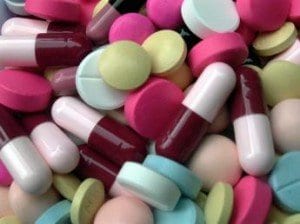
A common anti-anginal drug has been found to reduce the chest pain that many people with type 2 diabetes suffer from. According to research that was presented to the American College of Cardiology’s 62nd Annual Scientific Session., the drug also appears to have a more pronounced effect with those who have poorer glucose control.
The drug known as Ranolazine, is approved by the FDA for the treatment of chronic angina (chest pain), it is used as a first line therapy drug as well as an add-on when symptoms are not lessened from other anti-anginal drugs like nitrates, beta-blockers and calcium channel blockers.
This study is the first to use a double-blind, placebo-controlled trial to evaluate the drug within diabetic patients who have coronary disease and angina.
Patients with diabetes are already at a risk for coronary disease. Those who have already been diagnosed with both diabetes and coronary disease usually have a higher risk for chest pain (angina) than those who do not have diabetes.
The trial of Ranolazine with Chronic Stable Angina included 927 participants who either received a 1000 mg ranolazine twice daily or had a placebo for eight weeks. All patients were diagnosed with type 2 diabetes, coronary artery disease and angina, with at least one angina episode per week.
The results showed lower chest pain episodes in the patients who were taking ranolazine at 3.8 episodes per week compared against the 4.3 a week for patients taking the placebo. Particpants taking ranolazine also had to used sublingual nitroglycerin less compared to those who were taking the placebo, 1.7 doses compared to 2.1 doses per week.
Mikhail Kosiborod, MD, associate professor of medicine at the University of Missouri, Kansas City, cardiologist at St. Luke’s Mid America Heart Institute and the study’s lead author said, “Angina is associated with worse quality of life, increased risk of hospitalization and higher health care costs and appears to be more prevalent in patients with diabetes. While ranolazine was shown to be effective in reducing angina in prior studies, this is the first time it has been prospectively evaluated in patients with diabetes — a high-risk and therapeutically challenging group.”
“Each patient was given an electronic diary in which to record angina episodes, sublingual nitroglycerin use and other information. This unique feature was a strength of the study.” Dr. Kosiborod said.
“Patient-reported outcomes done with usual methods, such as paper entry, may result in a hoarding effect. Patients fill out a lot of information at one sitting, and there can be issues with data validity. In this study, they had daily prompts to use the electronic diary and were constantly monitored for compliance. There was 98 percent compliance with the diary in both arms.” Kosiborad added.
Among the participants, 61 percent were male and 96 percent of them has hypertension and 74 percent had a history of a heart attack. Eighty-two percent of patients were taking statins and 88 percent were taking angiotensin-converting enzyme inhibitors or angiotensin blockers. Sixteen percent of the patients were smokers.
Dr. Kosiborod said. “Ranolazine is an effective anti-anginal drug in patients with diabetes and may also have a glucose-lowering effect. If the glucose-lowering action of ranolazine is confirmed in future studies, patients with diabetes and angina may derive a dual benefit from this drug.”
“The reasons for this geographic difference are not clear,” Dr. Kosiborod said. “It wasn’t explained by differences in baseline characteristics but was driven by several sites located in Russia. We’re exploring it.”